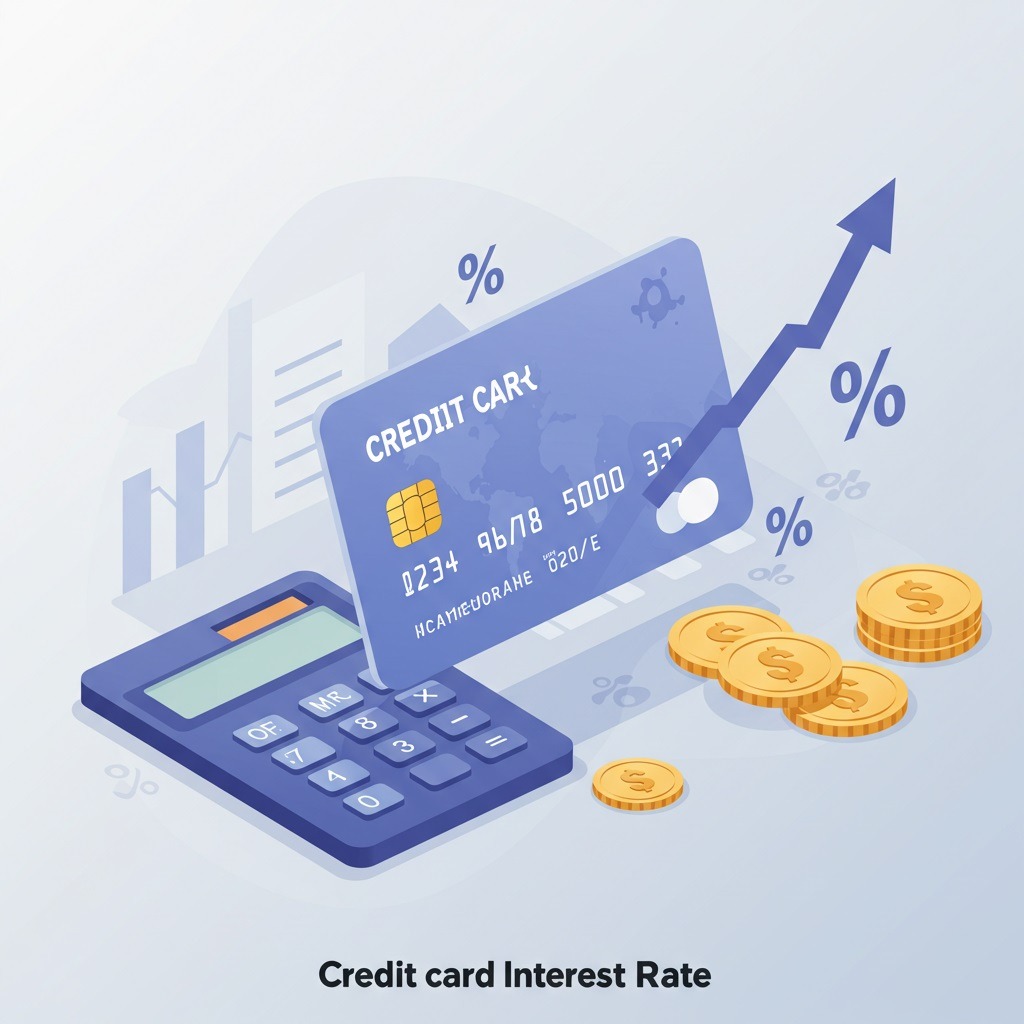Introduction to Credit Card Interest Rates
Credit cards offer financial flexibility, but they also come with costs—one of the most significant being interest rates. If you carry a balance on your card, you’ll be charged interest based on your Annual Percentage Rate (APR). Understanding credit cards APR is crucial for managing debt effectively and avoiding unnecessary financial burdens.
Many people underestimate how quickly credit card interest can accumulate. A high APR can make it difficult to pay off debt, leading to long-term financial struggles. In this guide, we’ll break down what APR is, how it works, and how you can manage or reduce it.
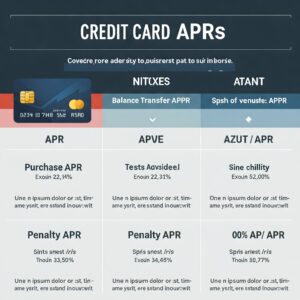
What is APR?
APR stands for Annual Percentage Rate, which represents the yearly cost of borrowing money on your credit card. Unlike simple interest, APR includes both the interest rate and any additional fees charged by the lender, providing a more comprehensive picture of borrowing costs.
For credit cards, APR applies when you don’t pay your full balance by the due date. Different credit cards APR rates apply depending on the type of transaction—whether it’s a purchase, cash advance, or balance transfer.
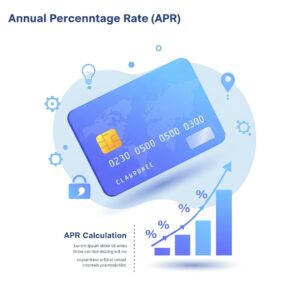
How Does APR Work on Credit Cards?
APR is expressed as a yearly rate, but credit card companies calculate interest daily. Here’s how it works:
Daily Periodic Rate Calculation – Your card issuer takes your APR and divides it by 365 days to find the daily periodic rate.
Interest Charged on the Balance – Each day, the daily periodic rate is applied to your unpaid balance.
Compounding Effect – Interest compounds daily, meaning you may end up paying more over time if you only make minimum payments.
For example, if your credit card APR is 20%, the daily interest rate would be 20% / 365 = 0.0548%. If you have a balance of $1,000, you’ll accrue $0.55 in interest the first day. This amount keeps growing daily unless you pay off the full balance.
Types of APR on Credit Cards
Credit cards can have multiple APRs depending on how you use them:
Purchase APR – The interest rate applied to standard credit card purchases.
Balance Transfer APR – The rate charged when you transfer a balance from another card.
Cash Advance APR – A higher interest rate applied to cash withdrawals from your credit card.
Penalty APR – A significantly higher rate triggered by late or missed payments.
Introductory (0% APR) – A promotional APR offered for a limited time on new purchases or balance transfers.
It’s essential to check your credit card’s terms to understand which APR applies to your transactions.

How is Credit Card APR Calculated?
Credit card APR is calculated based on the prime rate plus a margin determined by the card issuer. The prime rate is influenced by the Federal Reserve, and issuers adjust your APR based on your creditworthiness.
The formula for determining interest charges is:
(Daily Periodic Rate) × (Average Daily Balance) × (Number of Days in Billing Cycle)
For example, if your APR is 18%, your daily periodic rate is 18% ÷ 365 = 0.0493%. If your average daily balance is $1,500, and the billing cycle is 30 days:
0.0493% × $1,500 × 30 = $22.19 interest charge
This means that by not paying off your balance in full, you would incur $22.19 in interest charges for that month.
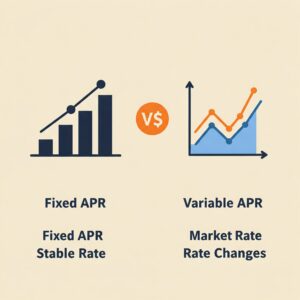
Fixed vs. Variable APR: What’s the Difference?
Fixed APR:
Remains the same unless the issuer notifies you of a change.
Provides stability in monthly interest charges.
Variable APR:
Fluctuates based on the prime rate.
Can increase or decrease without direct notice.
Most credit cards APR rates are variable, meaning they can change due to economic factors, affecting your cost of borrowing.
How to Lower Your Credit Card APR?
Reducing your APR can save you money on interest charges. Here’s how you can lower it:
Improve Your Credit Score – A higher credit score can qualify you for lower APR credit cards.
Negotiate with Your Lender – Call your credit card issuer and request a lower APR.
Use a Balance Transfer Card – Consider moving your balance to a 0% APR credit card to reduce interest charges.
Make Consistent On-Time Payments – A strong payment history can help lower your rate over time.
Reduce Your Credit Utilization – Keeping credit usage below 30% of your total limit improves your credit score, making you eligible for better APR offers.
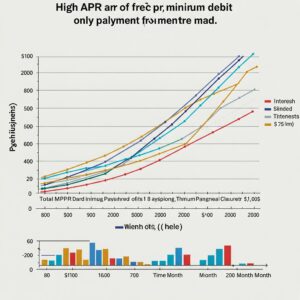
The Impact of APR on Your Credit Card Debt
High credit cards APR can make paying off debt challenging. For example, if you carry a $5,000 balance on a 25% APR credit card and only make minimum payments, it could take years to pay off your debt while incurring thousands in interest.
To reduce the impact of APR:
Always try to pay more than the minimum balance.
Use 0% APR offers wisely.
Consider debt consolidation options if your APR is too high.
APR vs. Interest Rate: Are They the Same?
Although they sound similar, APR and interest rates are different:
Interest Rate: The cost of borrowing money, usually expressed annually.
APR: Includes the interest rate plus additional fees like annual fees, balance transfer fees, and other charges.
APR provides a clearer picture of the total cost of using a credit card, making it a better comparison tool when choosing a credit card.
Conclusion: Managing Your Credit Card Interest Wisely
Understanding how credit cards APR works is essential for maintaining financial health. High APRs can lead to excessive interest charges, making it difficult to pay off debt. By improving your credit score, negotiating with lenders, and using balance transfer options wisely, you can minimize the impact of high APRs on your finances.
If you’re searching for low APR credit cards or want to compare rates, check out this guide on choosing the best low-interest credit cards.
By staying informed, you can make smarter financial decisions and avoid the pitfalls of high-interest credit card debt.

DEAL Mining: Your $10K Daily Crypto Fortune Awaits
Transform Your Financial Future with DEAL Cloud Mining The world of cryptocurrency has evolved dramatically, and DEAL Mining is a global leader that’s revolutionizing how individuals can earn substantial income from digital currencies. Unlike traditional methods that require technical expertise or significant upfront investments, this innovative platform makes cryptocurrency mining accessible to everyone. DEAL Mining is a global platform that operates across 200 countries and regions, providing users with unprecedented access to profitable mining opportunities. The company has established itself as a trusted name in the industry by combining AI technology with advanced cloud mining platforms to deliver consistent

5 Shocking TJX Earnings Secrets That Could Make You Rich
Introduction When most investors analyze earnings reports, they focus on the obvious metrics – revenue, profit margins, and earnings per share. However, TJX Companies has been quietly revealing secrets in their earnings that could unlock significant wealth-building opportunities for those who know where to look. While the stock market continues its unpredictable dance, savvy investors have discovered that TJX’s latest earnings contain hidden gems that most analysts completely overlook. These aren’t your typical investment insights – they’re game-changing revelations that explain why this large cap retailer consistently outperforms the broader market. The secrets revealed in this analysis don’t just

India’s Credit Boom: 3 Ways S&P Defies Trump Tariff Fear
I. Introduction S&P Global Ratings has delivered a surprising upgrade to India’s investment outlook, demonstrating remarkable confidence in the nation’s economic trajectory despite mounting global uncertainties. This bold move comes at a time when international trade tensions are escalating and concerns about protectionist policies continue to dominate financial headlines. India’s economic resilience has become a beacon of stability in an increasingly volatile global landscape. The country’s ability to maintain steady growth while navigating complex geopolitical challenges has impressed rating agencies and investors alike. Despite concerns surrounding potential Trump tariffs and their impact on emerging markets, S&P’s decision reflects a

Breaking: MIAX Stock Rockets 35% After $345M IPO Launch
I. Introduction Wall Street witnessed another remarkable IPO debut as Miami International Securities Exchange (MIAX) shares soared 35% during their first day of trading, marking one of the most impressive market entries of the year. The exchange operator’s stunning performance comes after successfully raising $345 million in what analysts are calling a perfectly timed market debut. The explosive surge demonstrates strong investor appetite for exchange operators, particularly those positioned in the rapidly growing options and derivatives markets. MIAX’s remarkable first-day performance has caught the attention of institutional investors and retail traders alike, with many viewing the company as a
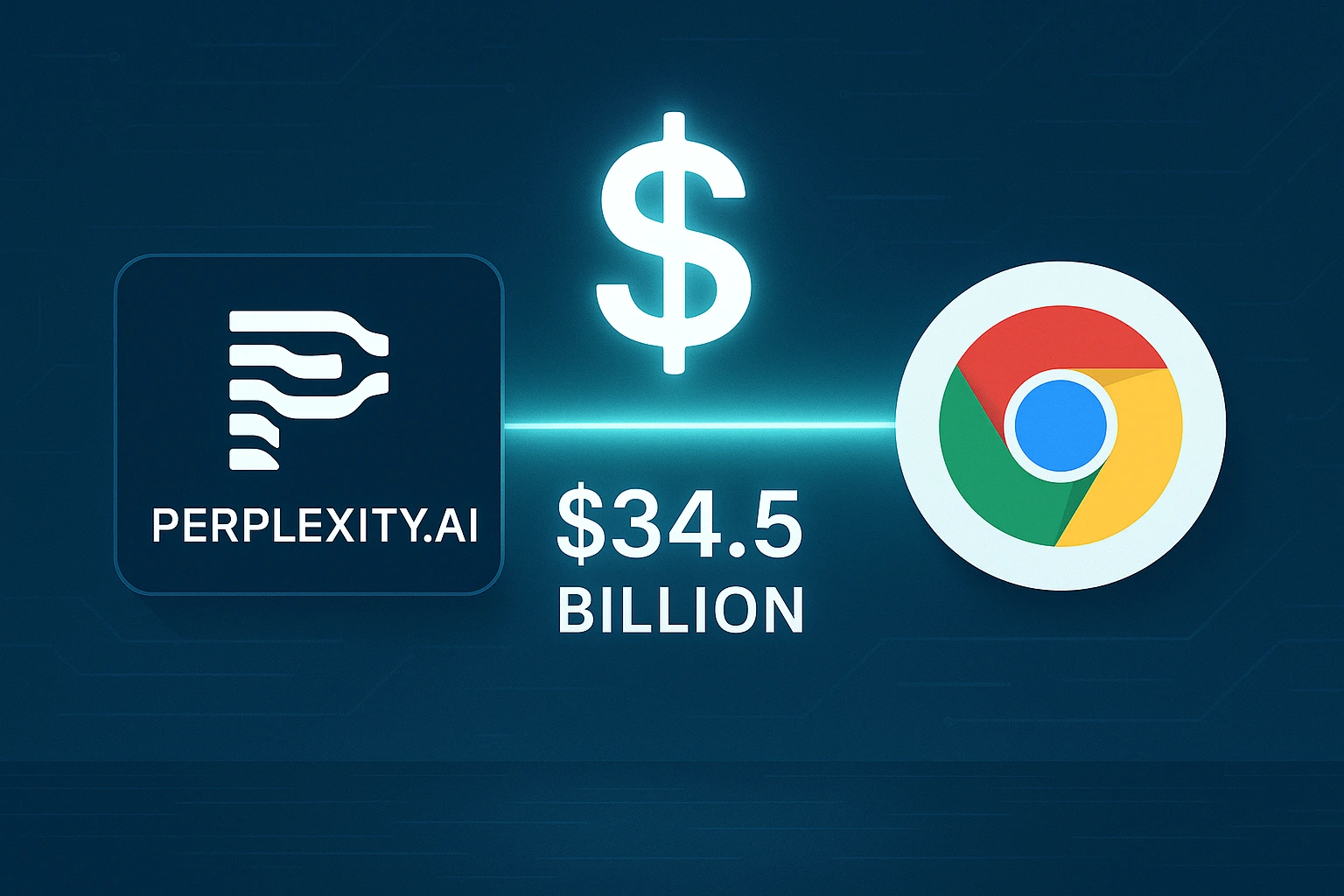
BREAKING: Perplexity Shocking $34.5B Chrome Takeover Bid
Try our free finance tools for quick calculations & smart decision — Explore Tools Introduction The tech world woke up to absolutely stunning news this week when Perplexity AI dropped a bombshell announcement that sent shockwaves through Silicon Valley. The company has made an unprecedented $34.5 billion offer to acquire Google Chrome, marking what could be the most audacious tech acquisition attempt in recent history. This isn’t just another routine business deal – this is a move that has left even the most seasoned industry insiders scratching their heads in disbelief. The sheer boldness of a relatively young AI

Bill Gates’ $45B Secret: 3 Stocks Control 67% (Surprising!)
Introduction Bill Gates left his position as Chief Executive Officer of Microsoft (MSFT -0.05%) in 2000 at 44 years of age. He reached the centibillionaire status in 1999 and was the wealthiest man in the world. It took him 20 years to fully step away from the company he founded, which included resigning from the board in 2020. As of today, he has been focusing on tackling the world’s most difficult health, education and equality issues through the Gates Foundation for the past 25 years. In that duration, he along with ex-wife French Gates, donated $60 billion, making them


